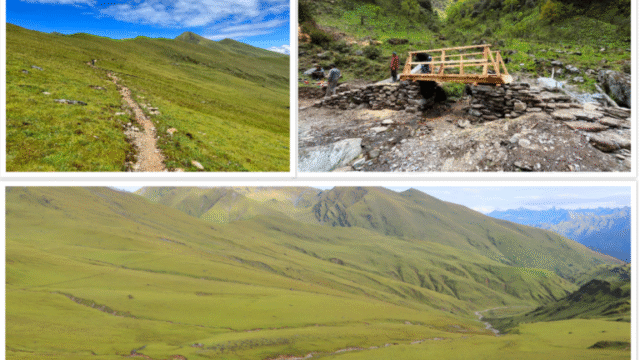Pokhara, a city globally acclaimed for its tourism, has recently earned the title of Nepal’s tourism capital. This prestigious designation has significantly transformed the city’s tourism dynamics. Since the announcement, Pokhara has already experienced one major tourist season and is gearing up for the next one, which begins in Ashwin (mid-September). In Nepal, the peak tourist seasons are Ashwin-Mangsir (September to December) and Chaitra-Jestha (March to June). During these times, there is a notable increase in tourist activity in Pokhara and other destinations throughout the country.
With its new status, Pokhara aims to draw even more tourists in the upcoming season. Laxman Subedi, President of the Pokhara Hotel Association, noted that the current focus is on enhancing promotional activities. In response to Pokhara’s new role as the tourism capital, local hotels have rolled out various promotional packages and discounts.
Subedi explained that during the off-season, hotels have been offering discounts of up to 50%. “Tourist numbers have been quite low during the monsoon season, partly due to the poor condition of the Pokhara-Muglin highway,” he said. However, he is optimistic about a surge in tourist arrivals starting in Ashwin, as more international trekkers are expected to visit. To boost domestic tourism, initiatives like the “Let’s Go to Pokhara” campaign have been launched in various cities across Nepal.
There are also efforts to attract tourists from India through programs such as “Chaliye Pokhara,” and similar promotional activities are underway in China. Subedi highlighted that the Pokhara Hotel Association, along with other tourism organizations, is working diligently to boost tourist numbers. He also called for increased government focus and investment in infrastructure to support tourism growth.
The official declaration of Pokhara as the tourism capital was made by former Prime Minister Pushpa Kamal Dahal ‘Prachanda’ on March 18. During the announcement, Dahal emphasized Pokhara’s unique combination of natural beauty, cultural heritage, and adventure opportunities. Damber Jisi, Head of the Tourism Branch at the Province’s Industry and Tourism Ministry, reported that work on tourism infrastructure and promotion is ongoing. Documentaries and promotional materials showcasing Pokhara and nearby destinations are being prepared and disseminated.
Looking ahead, the Ministry plans to host large-scale cultural events and other promotional activities to attract tourists in the forthcoming season. The development of the Round Fewa-View Fewa trekking trail is halfway completed, with an additional NPR 50 lakh budgeted for this year. The provincial government is also working on launching cruise ships on Begnas Lake and modernizing infrastructure, including constructing a new bus park, implementing direct shuttle services, and establishing meditation centers.
Pom Narayan Shrestha, former president of the Pokhara Tourism Council, observed that the tourism capital designation is enhancing Pokhara’s global tourism profile. He stressed the importance of collaborative efforts between the government and private sector to fully leverage this new status, which he believes will have significant long-term economic benefits for Nepal as a whole.
Despite the opening of Pokhara International Airport two years ago, international flights have yet to start. Shrestha underscored the need for regular international flights and improved connectivity with China to increase tourist arrivals. Currently, Pokhara boasts nearly 1,200 hotels ranging from budget to luxury, reflecting significant investment in the tourism sector.
Pokhara’s attractions include its picturesque lakes, the Annapurna Base Camp, paragliding, zip-lining, and cultural festivals. Known for its breathtaking natural beauty, including Fewa, Begnas, and Rupa lakes, Pokhara offers a wide range of adventure and cultural activities. The surrounding regions, such as Baglung and Manang, also feature additional attractions for tourists.
With its new designation as Nepal’s tourism capital, Pokhara is set to become a key hub for both domestic and international tourists, driven by ongoing efforts to improve infrastructure and enhance promotional activities.






